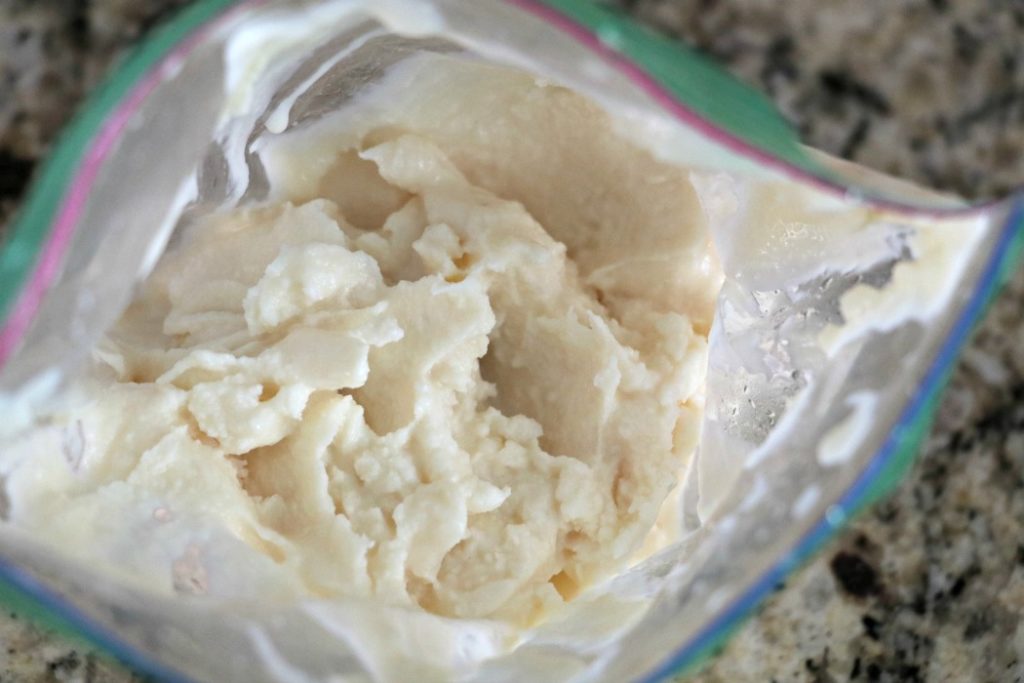Expand your STEAM skills with these challenges
STEAM Weekly Challenge
Every week, EVPL will be posting a new STEAM challenge for you to complete from your home! The challenge will run from Monday until Friday. Your parents can help, or you can complete the challenge on your own. We would love to see your creations! Submissions will be posted the following Monday when a new challenge is presented.
Ice Cream in a Bag!
Description
Summer is the perfect opportunity to become a food scientist! This week we are going to create food chemistry by making our own ice cream. Visit the EVPL YouTube page for a video demonstration.
Suggested Materials
- 1 tbsp sugar
- 1/2 cup of milk (or half and half)
- 1/4 tsp of vanilla extract
- 6 tbsp (or 1/4 cup) rock salt
- 2 sandwich-sized food storage bags
- 1 gallon-sized food storage bag
- Ice cubes
- Dish towel
Directions
- Fill the large bag half full of ice and add the rock salt.
- Put the milk, vanilla, and sugar into the small bag and seal it. Too much air left inside may pop the bag open during the shaking.
- Place the milk mixture bag into your second sandwich bag. (This is an extra precaution to keep the ice and salt out of your ice cream.)
- Place the small bags inside the large one, and seal it carefully.
- Shake until the mixture is ice cream, which takes about 5 minutes.
- Wrap the dish towel around your bag as you shake it.
- The bag will be very cold and will also become very wet as the ice is melting.
- Open your large bag and carefully remove your smaller bags.
- Remove the ice cream mixture bag, open carefully, and enjoy!
What’s happening?
Water freezes and ice melts at a temperature of 32° Fahrenheit; this is called the freezing point. Salt can lower the freezing point to -22° F, meaning it needs to be colder than 32° for water to freeze. That’s why we add salt to icy sidewalks and roads in the winter–to encourage the melting process. When you add salt to the bag of ice, it lowers the freezing point and the ice starts melting. When you add the milk mixture bag to the bag of ice, heat leaves the milk bag, and the temperature of the milk gets lower. Eventually, the milk mixture will freeze into ice cream!

Additional suggestions to enhance the challenge
- Use a thermometer to record the temperature. Check the temperature of the bag of ice before you add the salt and again after you add the salt and the ice begins melting. Check the temperature of the milk mixture bag before you add it to the bag of ice and again after it freezes into ice cream.
- What happens if you don’t use salt? Set up two bags to make ice cream, but leave the rock salt out of one bag.
- Try using different ingredients. What happens if you swap out the milk for heavy cream or whipping cream? What happens if you try another type of milk like almond milk or oat milk?
Age group/grade level suggested
Ages 3 and up. Younger participants can assist with adding ingredients.
Send a picture of your ice cream to marketing@evpl.org to be featured next week!
Submission requirements
First name
Age
Learning outcomes
- Examine how ingredients change during the process. Using the freezing power of salt and ice to create ice crystals in milk without a freezer!

EVPL Staff
With 8 locations throughout Vanderburgh County, EVPL is ready to discover, explore, and connect WITH you! We encourage you to uncover new things, revisit old favorites, and to engage with us along the way.
200 SE Martin Luther King Jr. Blvd
Evansville, Indiana 47713
Administration: ceo@evpl.org
Card & Account: circulation@evpl.org
Feedback & Ideas: marketing@evpl.org




